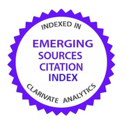Advanced analytics pricing for the calculation of post-covid19 scenarios in automobile insurance
DOI:
https://doi.org/10.26360/2020_7Keywords:
predictive modeling, loss, combined ratio, scenarios, machine learningAbstract
The reduction in mobility during the COVID19 pandemic has led to a reduction in the accident claims rate in motor insurance. Insurance companies will need to calculate pricing scenarios for possible changes in transportation habits, using data from 2020. We show how some Machine Learning methods (decision trees and gradient boosting) can be used to evaluate pricing scenarios and we propose a strategy to correct the circumstances of exposure to risk that have occurred during the pandemic. We conclude that it is possible to use the existing information during the lockdown period provided that changes in the portfolios can be identified and corrected, and assessing whether or not the impact is homogeneous by risk groups.
Downloads
References
Boucher, J-P., Côté, S. y Guillen, M. (2017). Exposure as duration and distance in telematics motor insurance using generalized additive models, Risks, 5(4), 54. https://doi.org/10.3390/risks5040054
Breiman L., Friedman J. H., Olshen R. A. y Stone, C. J. (1984) Classification and Regression Trees. Wadsworth. Belmont, California.
Charpentier, A. (2014). Computational Actuarial Science with R. CRC press, Boca Raton.
Côté, M. P., Hartman, B., Mercier, O., Meyers, J., Cummings, J. y Harmon, E. (2020). Synthesizing property & casualty ratemaking datasets using generative adversarial networks. ArXiv preprint arXiv:2008.06110.[Fecha del último acceso: 25.09.2020] https://arxiv.org/pdf/2008.06110.pdf
Denuit, M., Maréchal, X., Pitrebois, S. y Walhin, J.F. (2007). Actuarial modelling of claim counts: Risk classification, credibility and bonus-malus systems. John Wiley & Sons, Berlin.
Dirección General de Tráfico (2020). Accidentalidad en Semana Santa. Se reducen un 52% los fallecidos. [Fecha del último acceso: 25.09.2020] http://revista.dgt.es/es/noticias/nacional/2020/04ABRIL/0415siniestralidad-vial-en-Semana-Santa.shtml#.X1e3uHnHzIU
Dutang, C. y Charpentier, A. (2016). CASdatasets. R package version, 1-0. [Fecha del último acceso: 25.09.2020] http://cas.uqam.ca/pub/R/web/CASdatasets-manual.pdf Friedman, J. H. (2001). Greedy function approximation: A gradient boosting machine. Annals of Statistics, 29(5), 1189–1232.
Gao, G., Meng, S. y Wüthrich, M.V. (2019). Claims frequency modeling using telematics car driving data. Scandinavian Actuarial Journal, 2019(2), 143-162.
Gao, G., Wüthrich, M.V. y Yang, H. (2019). Evaluation of driving risk at different speeds. Insurance: Mathematics and Economics, 88, 108-119.
Guillen, M., Nielsen, J.P., Ayuso, M. y Pérez-Marin, A.M. (2018). The use of telematics devices to improve automobile insurance rates. Risk Analysis 39(3), 662-672.
Howard, J. (2020). Plague was one of history’s deadliest diseases—then we found a cure, National Geographic, [Fecha del último acceso: 25.09.2020] https://www.nationalgeographic.com/science/health-and-human-body/ human-diseases/the-plague/
Ke, G., Meng, Q., Finley, T., Wang, T., Chen, W., Ma, W. y Liu, T.Y. (2017). LightGBM: A highly efficient gradient boosting decision tree. In Advances in neural information processing systems (pp. 3146-3154). Editado por I. Guyon, U.V. Luxburg, S. Bengio, H. Wallach,
R. Fergus, S. Vishwanathan y R. Garnett. Proceedings of “Neural Information Processing Systems 2017.” Long Beach, CA, 4-9 Diciembre, 2017. [Fecha del último acceso: 25.09.2020] http://papers.nips.cc/paper/6907-lightgbm-a-highly-efficient-gradient-boosting-decision
Lorentzen, C. y Mayer, M. (2020). Peeking into the black box: an actuarial case study for interpretable machine learning. SSRN. http://dx.doi.org/10.2139/ssrn.3595944
Noll, A., Salzmann, R. y Wüthrich, M. V. (2020). Case study: French motorthird-party liability claims. SSRN 3164764. http://dx.doi.org/10.2139/ssrn.3164764
Pesantez-Narvaez, J., Guillen, M. y Alcañiz, M. (2019). Predicting motor insurance claims using telematics data—XGBoost versus logistic regression. Risks, 7(2), 70. https://doi.org/10.3390/risks7020070
Počuča, N., Jevtić, P., McNicholas, P.D. y Miljkovic, T. (2020). Modeling frequency and severity of claims with the zero-inflated generalized cluster-weighted models. Insurance: Mathematics and Economics, 94, 79-93.
Forbes (2020). Car Insurance Hike Looms Post-Covid, Maverick Demands Pricing Reform [Fecha del último acceso: 25.09.2020] https://www.forbes.com/sites/advisoruk/2020/07/07/car-insurance-hike-looms-post-covid-maverick-demands-pricing-reform/#53709af369cb
Richter, A. y Wilson, T.C. (2020). Covid‑19: implications for insurer risk management and the insurability of pandemic risk. The Geneva Risk and Insurance Review. En prensa. https://doi.org/10.1057/s10713-020-00054-z
Schelldorfer, J. y Wüthrich, M.V. (2019). Nesting classical actuarial models into neural networks. Available at SSRN 3320525. http://dx.doi.org/10.2139/ssrn.3320525
Su, X. y Bai, M. (2020). Stochastic gradient boosting frequency-severity model of insurance claims. PloS one, 15(8), e0238000. https://doi.org/10.1371/journal.pone.0238000
Wüthrich, M.V. (2019). Bias regularization in neural network models for general insurance pricing. European Actuarial Journal, 1-24.
Downloads
Published
How to Cite
Issue
Section
License
Copyright (c) 2023 Xenxo Vidal-Llana, Montserrat Guillen

This work is licensed under a Creative Commons Attribution-NonCommercial-NoDerivatives 4.0 International License.


















